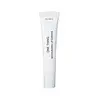What's inside
What's inside
 Key Ingredients
Key Ingredients

No key ingredients
 Benefits
Benefits

 Concerns
Concerns

No concerns
 Ingredients Side-by-side
Ingredients Side-by-side

Polyisobutene
Simmondsia Chinensis Seed Oil
EmollientCaprylic/Capric/Myristic/Stearic Triglyceride
EmollientButyrospermum Parkii Butter
Skin ConditioningJojoba Esters
EmollientSorbitan Olivate
EmulsifyingOlea Europaea Fruit Oil
MaskingDipentaerythrityl Hexacaprylate/Hexacaprate
EmulsifyingTridecyl Trimellitate
EmollientHydrogenated Olive Oil
Skin ConditioningTridecyl Stearate
EmollientTocopheryl Acetate
AntioxidantOlea Europaea Oil Unsaponifiables
Skin ConditioningCaprylyl Glycol
EmollientNeopentyl Glycol Dicaprylate/Dicaprate
EmollientCitric Acid
BufferingTocopherol
AntioxidantPolyisobutene, Simmondsia Chinensis Seed Oil, Caprylic/Capric/Myristic/Stearic Triglyceride, Butyrospermum Parkii Butter, Jojoba Esters, Sorbitan Olivate, Olea Europaea Fruit Oil, Dipentaerythrityl Hexacaprylate/Hexacaprate, Tridecyl Trimellitate, Hydrogenated Olive Oil, Tridecyl Stearate, Tocopheryl Acetate, Olea Europaea Oil Unsaponifiables, Caprylyl Glycol, Neopentyl Glycol Dicaprylate/Dicaprate, Citric Acid, Tocopherol
 Reviews
Reviews

Ingredients Explained
These ingredients are found in both products.
Ingredients higher up in an ingredient list are typically present in a larger amount.
Olea Europaea Fruit Oil is the fixed oil obtained from the ripe fruit of the Olive. In other words - olive oil.
The primary contents of olive oil are glycerides of the fatty acids linoleic, oleic and palmitic.
Olive oil also contains antioxidants such as Vitamin E. Antioxidants may help reduce signs of aging by fighting unstable free-radical molecules. It also contains Vitamins A (retinol), D, and K.
The squalene in olive oil makes it a great emollient. Emollients help soothe and soften your skin by trapping moisture in. This makes olive oil a great skin moisturizer.
Studies show olive oil to have antibacterial and antifungal properties in low concentrations. Another study found olive oil irritated sensitive oily skin. We always recommend speaking with a professional about using this ingredient in your routine.
Due to the fatty acid content, this ingredient may not be fungal-acne safe.
Learn more about Olea Europaea Fruit OilThis oil comes from the seeds of the desert shrub called Jojoba. It is more commonly known as jojoba oil, a non-comedogenic oil.
Jojoba oil does not contain fragrance and has many fatty-acids, making it a great soothing ingredient.
It also contains Vitamin E, a great moisturizing ingredient. Vitamin E is also an antioxidant and protects your skin against oxidative damage.
This ingredient humectant properties, meaning it helps draw moisture from the air. This helps keep your skin hydrated.
While jojoba has antibacterial properties, it is only able to kill some strains of bacteria.
Studies also show it helps in wound healing. In fact, Indigenous cultures have used jojoba as a moisturizer and to help treat burns for centuries.
Fun fact: Jojoba oil similar to natural human skin sebum, so it has a great effect on dry skin. It is also promising with helping to regulate sebum production.
Due to its fatty acid content, Jojoba oil may not be fungal acne safe. We recommend speaking with a professional if you have any concerns.
Learn more about Simmondsia Chinensis Seed Oil